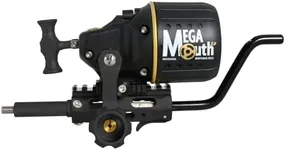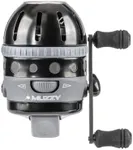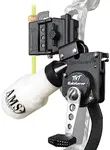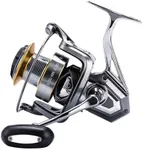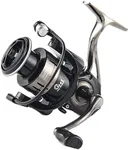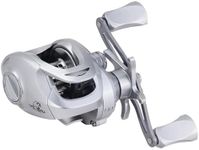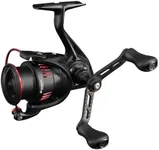Buying Guide for the Best Bowfishing Reels
Choosing the right bowfishing reel is crucial for a successful and enjoyable bowfishing experience. The reel is responsible for managing the line and ensuring you can retrieve your catch efficiently. When selecting a bowfishing reel, it's important to consider several key specifications to find the best fit for your needs. Understanding these specs will help you make an informed decision and enhance your overall bowfishing performance.Type of ReelThe type of reel is a fundamental aspect to consider. There are three main types: hand-wrap reels, spincast reels, and retriever reels. Hand-wrap reels are the most basic and require manual wrapping of the line, making them suitable for beginners or those on a budget. Spincast reels are more advanced, offering a balance of ease of use and efficiency, ideal for intermediate users. Retriever reels are the most advanced, providing quick line retrieval and minimal tangling, perfect for experienced bowfishers. Choose based on your skill level and how often you plan to go bowfishing.
Line CapacityLine capacity refers to the amount of line the reel can hold. This is important because it determines how far you can shoot and how much line you have to work with when reeling in a catch. Reels with higher line capacity are better for larger bodies of water and bigger fish, while lower capacity reels are sufficient for smaller ponds and smaller fish. Consider the typical size of the fish you target and the environments you fish in to decide on the appropriate line capacity.
Gear RatioThe gear ratio indicates how many times the spool turns with each handle turn. A higher gear ratio means faster line retrieval, which is beneficial when you need to quickly reel in a catch. Lower gear ratios provide more power but slower retrieval, which can be useful for larger, stronger fish. If you often target fast-moving fish, a higher gear ratio is preferable. For larger, more powerful fish, a lower gear ratio might be more effective.
DurabilityDurability is crucial because bowfishing can be tough on equipment. Reels made from high-quality materials like aluminum or stainless steel are more durable and can withstand the harsh conditions of bowfishing. Plastic reels are lighter and cheaper but may not last as long. Consider how often you fish and the conditions you typically encounter. If you fish frequently or in challenging environments, investing in a more durable reel is wise.
Ease of UseEase of use is an important factor, especially for beginners. Some reels are designed to be more user-friendly, with features like easy line release and retrieval mechanisms. Spincast and retriever reels are generally easier to use than hand-wrap reels. If you're new to bowfishing, look for a reel that offers straightforward operation and minimal maintenance. More experienced users might prioritize performance over ease of use.
